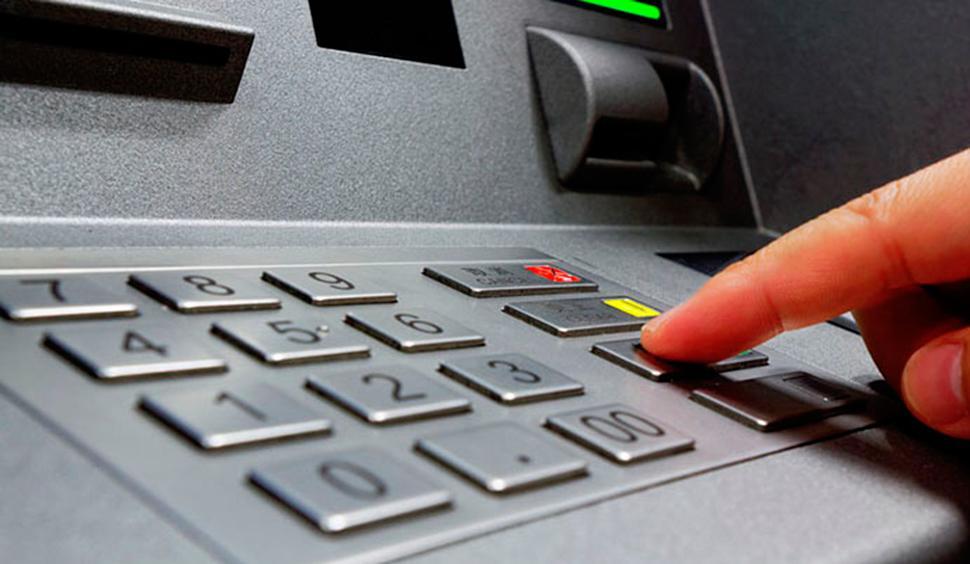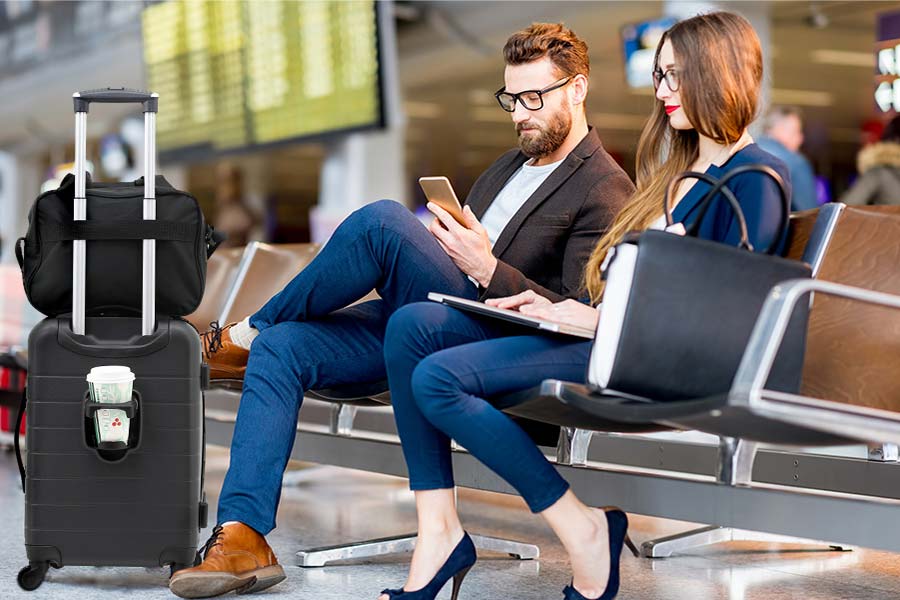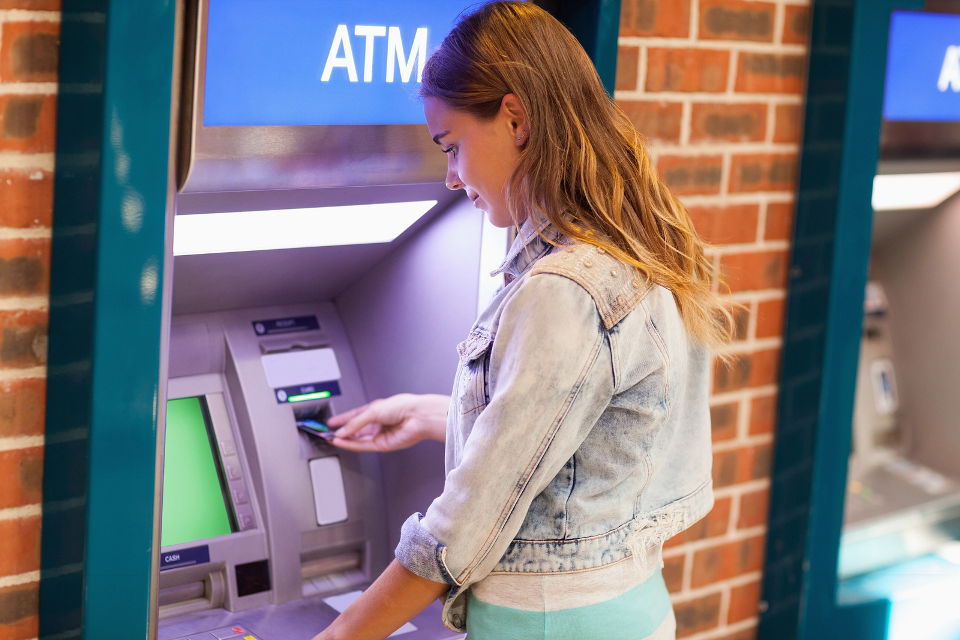It might surprise you to learn that the average ATM fee in America is $4.57. Considering that the minimum withdrawal amount is $20, you effectively pay 25% more if you use an out-of-network ATM with such a high fee.
Of course, your actual fees will vary depending on where you live and what type of ATM you use. However, it’s fair to say that these fees can really add up.

6 Easy Ways to Avoid ATM Fees
ATM fees can feel like money down the drain—but with a little planning, they’re easy to avoid. Whether you’re running errands or traveling, there are plenty of ways to access your cash without getting hit with charges.
A few smart habits can save you real money over time. Here’s how to keep more of your cash where it belongs—in your pocket.
1. Look for Banks that Reimburse ATM Fees
Even if your bank does participate in an ATM network, it’s also good to find one that reimburses your ATM fees. Some banks even reimburse international ATM fees.
There are a few ways they do this: some offer an unlimited reimbursable amount, while others might cap it out between $10 and $25 each month. So, how does ATM fee reimbursement work? Typically, you’ll still have to pay the fee upfront.
Your bank then credits any applicable ATM fees to your account balance at the end of your billing cycle. So, you generally have to wait a bit of time before seeing that money. Still, it’s much better than never seeing it at all! Interested in finding a financial institution that offers ATM fee reimbursements?
Banks and Credit Unions That Reimburse Out-of-Network ATM Fees
- Alliant Credit Union – reimburses up to $20 per month
- Ally Bank – reimburses up to $10 per statement cycle for ATM fees charged at other ATMs nationwide
- BankFive – up to $15 reimbursed each cycle
- Charles Schwab Bank – unlimited ATM reimbursements worldwide
- First Republic Bank – reimburses third-party fees worldwide
- Incredible Bank – automatically reimburses ATM fees
- Radius Bank – unlimited ATM fee reimbursements domestically
Top Banks and Credit Unions That Don’t Charge ATM Fees Within Their Network
- Capital One 360 – over 70,000 Capital One or Allpoint ATMs at zero cost
- Chase – over 16,000 fee-free ATMs
- Chime – over 47,000 fee-free ATMs through the MoneyPass and Visa Plus Alliance networks
- Citibank – over 65,000 ATMs fee-free to customers
- Connexus Credit Union – over 67,000 surcharge-free ATMs through CO-OP and MoneyPass
- Current – over 40,000 fee-free ATMs
- Fifth Third Bank – over 50,000 fee-free ATMs
- PeoplesChoice Credit Union – over 85,000 fee-free ATMs
- PenFed Credit Union – over 85,000 fee-free ATMs
- Stash – over free at 55,000+ Allpoint ATMs
- Upgrade – over 55,000 ATMs
- Wells Fargo – free access at over 13,000 ATMs
As you can see, there are plenty of financial institutions offering fee-free options that allow you to avoid ATM fees. Many of these bank accounts also come with no monthly fees. You can narrow down the list by reviewing other account features. You should also take into account how much foreign travel you do.
2. Verify Payment Methods in Advance
If you’re shopping at a big-box store or placing an online order, you probably won’t need cash. But if you’re visiting a local shop, food truck, or farmer’s market, it’s worth checking if they accept cards.
A quick Google search usually reveals what forms of payment a business accepts. If not, check Yelp or social media reviews. When in doubt, give them a call or send a message before you go.
Plenty of small businesses rely on mobile card readers, but not all do—especially in places with spotty Wi-Fi or limited equipment. Some may only take cash to keep things simple.
To avoid scrambling for an ATM at the last minute, take a minute to check first. Supporting small, local spots is a great move—but showing up prepared makes it easier for both you and them.
3. Keep Backup in Your Wallet
It makes sense to keep your wallet light, especially with everything else you’re already carrying. But a small amount of backup cash can go a long way.
Tucking a $20 bill into your wallet or pocket could save you from scrambling if a card reader goes down or you run into a cash-only spot. It’s enough to cover a quick meal, a cab ride, or another small expense. And if your wallet gets lost, you’re not out much.
Carry a Blank Check
A blank check adds flexibility. It gives you access to more funds without carrying a large amount of cash. Since it’s unsigned, there’s little risk if it gets lost—but you can still stop payment if needed.
Not every place accepts checks anymore, but some still do. Between that and a small cash stash, you’ll be ready for those moments when cards just won’t cut it.
4. Use Your Debit Card to Get Cash Back
One easy way to skip ATM fees is to get cash back during a store purchase using your debit card. Just buy something small—like a drink or snack—and request cash at checkout. Many grocery stores, pharmacies, and big-box retailers offer this option.
Gas stations are another smart spot to try. Major chains like Kroger, 7-Eleven, and Safeway often let you get cash back when you pay inside. That’s especially useful if you’re traveling or want to avoid sketchy standalone ATMs.
Just keep in mind:
- Some stores require a minimum purchase (often $1–$5)
- Cash back is usually capped (CVS, for example, limits it to $35)
Still, you avoid fees—and unlike most ATMs, you can ask for specific bill amounts. If you’re already making a purchase, getting cash back is one of the easiest ways to keep more of your own money.
5. Check Your Bank’s ATM Network
Before you use an ATM, see if it’s part of your bank’s network. Using an out-of-network ATM often means double fees—one from the ATM operator and another from your bank.
Start by checking your bank’s app or website for an ATM locator. Most apps include a built-in ATM locator that shows nearby machines and filters for fee-free options. Some even offer GPS directions to get you there. If you’re in an unfamiliar area or traveling, this is one of the quickest ways to avoid surprise fees.
You can also look on the back of your debit card to see which networks your bank partners with.
Common ATM Networks
- Allpoint – 55,000 ATMs across the U.S. and in countries like Canada, Mexico, and the U.K.
- MoneyPass – Found in the U.S. and Puerto Rico, including major retailers like Walmart.
- Co-op Solutions – 30,000+ ATMs and 5,000 shared branches for credit union members.
If your bank or credit union isn’t part of a large network and you use ATMs often, it may be worth switching to one that is. It’s one of the easiest ways to avoid unnecessary fees.
6. Withdraw More, Less Often
If you’re using a fee-free ATM, consider taking out a larger amount all at once instead of making multiple small withdrawals. Even if you don’t need the full amount right away, keeping extra cash on hand means fewer trips to the ATM—and fewer chances to run into fees.
It’s a simple habit shift that can make a noticeable difference, especially if you tend to rely on cash for certain purchases.
Final Thoughts
ATM fees are one of the most avoidable banking costs if you know how to plan ahead. Whether it’s finding a bank that reimburses fees, using a network ATM, or getting cash back at the store, small decisions can save you a lot of money over time.
The best approach is to set yourself up with the right tools. Use your bank’s ATM locator, carry a little backup cash, and think about where you’ll need money before you leave the house. With a few smart habits, you can keep more of your own money and stop paying just to access it.




